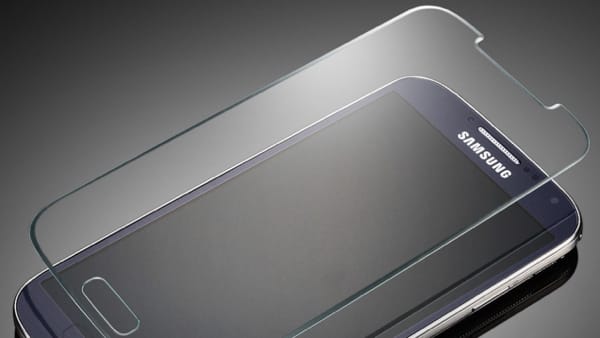Smartphones, tablets and smartwatches driving demand for cover glass

We don’t often cover such seemingly ordinary facets of smartphones and tablets as cover glass, but with increasing screen sizes, the proliferation of smartphones over the past few years had fed a huge demand for advanced glass technology. It has become a massive industry in itself with the likes of Gorilla Glass pushing the sector forward with ever stronger, tougher and more resistant covers.
But the industry has witnessed a decline in the last few years as the smartphone and tablet markets mature, with revenue down from 39% year over year in 2013 to 11% in 2015. And while the overall cover glass market is in fact falling, it is largely expected that increasing sales of wearables like the Watch will lead to a gradual increase in cover glass shipments, according to a new survey by IHS Inc.
Cover glass revenue hopes pinned on smartwatches
“Although the average display size for tablets is increasing, simpler industrial design and weak device demand are causing average selling prices for cover glass to fall quickly”, said Terry Yu, senior analyst for small and medium displays for IHS. “Cover glass makers are now pinning hopes on smart watches, as a way to shore up flagging revenue growth caused by the maturation of the smartphone and tablet segments.”
Today, smartphones represent around 55% of all cover glass demand, followed by tablets. But requirements for the glass is becoming more complicated – with aluminosilicate glass, more holes for components and more ink layers, causing selling prices to rise faster than area demand. Smartphone cover glass then is expected to make up 63% of revenues in 2015. As a comparison, tablet cover glass should reach 29% share of glass revenues by the end of the year.
However, mainly thanks to consumer demand for the Watch, demand for the smart watch cover glass area (in terms of physical size) is expected to increase five fold in 2015, reaching 33,000 square metres, still just 10% of the total area shipments – as wearable devices are much smaller than those in smartphones and tablets. Smartwatches typically use a slightly curved design (referred to as 2.5D), along with sapphire in some cases, which will keep average selling prices higher, leading to a 3% share of the total market this year.
The higher costs for special aluminosilicate and sapphire glass significantly affect the total cover glass costs. Sapphire, for instance, can cost up to 12 times more than regular aluminosilicate glass.
“Sapphire glass used in wearable devices commands a premium price, so growth in that area would help shore up industry revenues,” said IHS’ Yu. “In addition, sapphire glass is already used in the traditional watch industry, which makes it easier to adopt by smart watch cover glass manufacturers.”
Mobile Industry Review would like to thank Amando Russo of IHS for providing us with information used in this article.
The full IHS Touch Panel Cover Glass Report focuses on the supply chain, as it explores and elucidates market trends, shipment volume, revenue and area. For information about purchasing this report, contact the sales department at IHS in the Americas at +1 844 301 7334 or AmericasLeads@ihs.com; in Europe, Middle East and Africa (EMEA) at +44 1344 328 300 or technology_emea@ihs.com; or Asia-Pacific (APAC) at +604 291 3600 or technology_APAC@ihs.com.
You can also read more in the original report here.





